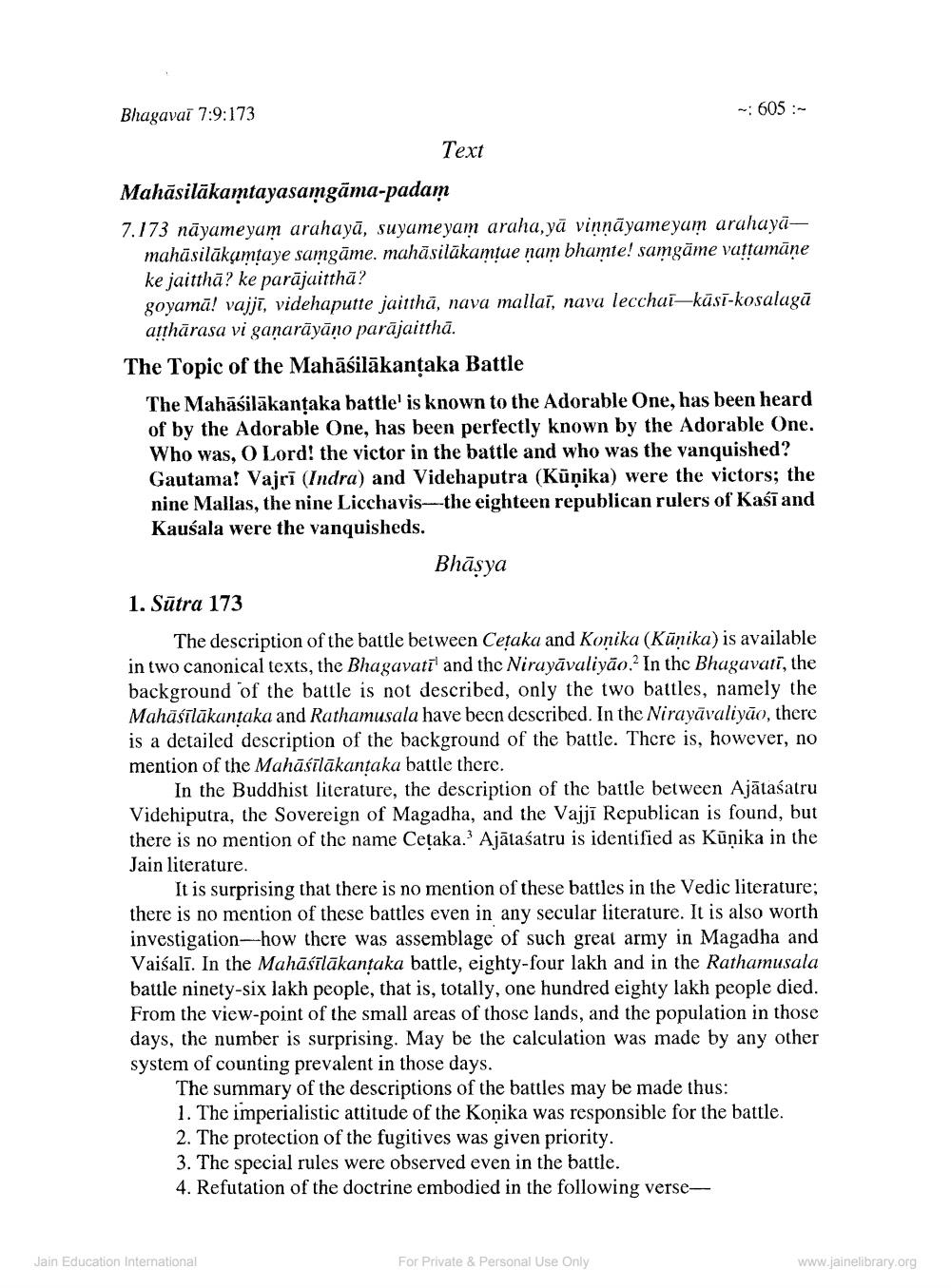________________
Bhagavai 7:9:173
-: 605 :
Text
Mahāsilākamtayasamgāma-padam 7.173 nāyameyam arahayā, suyumeyam araha, yā vinnäyameyam arahayā
mahāsilākumtaye samgāme. mahāsilākamtue nam bhamte! samgāme vattamāne ke jaitthā? ke parājaitthā? goyamā! vajjī, videhaputte jaitthā, nava mallai, nava lecchai-küsi-kosalagā
atthārasa vi gañarāyāno parājaitthā. The Topic of the Mahāśilākantaka Battle
The Mahāśilākantaka battle' is known to the Adorable One, has been heard of by the Adorable One, has been perfectly known by the Adorable One. Who was, O Lord! the victor in the battle and who was the vanquished? Gautama! Vajri (Indra) and Videhaputra (Kūņika) were the victors; the nine Mallas, the nine Licchavis--the eighteen republican rulers of Kaśī and Kausala were the vanquisheds.
Bhāsya 1. Sutra 173
The description of the battle between Cetaka and Konika (Kūnika) is available in two canonical texts, the Bhagavati' and the Nirayāvaliyão.2 In the Bhagavati, the background of the battle is not described, only the two battles, namely the Mahāśīlākuntaka and Rathamusala have been described. In the Nirayāvaliyão, there is a detailed description of the background of the battle. There is, however, no mention of the Mahāśīlākantaka battle there.
In the Buddhist literature, the description of the battle between Ajātasatru Videhiputra, the Sovereign of Magadha, and the Vajji Republican is found, but there is no mention of the name Cetaka. Ajātasatru is identified as Kūņika in the Jain literature.
It is surprising that there is no mention of these battles in the Vedic literature; there is no mention of these battles even in any secular literature. It is also worth investigation-how there was assemblage of such great army in Magadha and Vaisalī. In the Mahāśīlākanțaka battle, eighty-four lakh and in the Rathamusala battle ninety-six lakh people, that is, totally, one hundred eighty lakh people died. From the view-point of the small areas of those lands, and the population in those days, the number is surprising. May be the calculation was made by any other system of counting prevalent in those days.
The summary of the descriptions of the battles may be made thus: 1. The imperialistic attitude of the Koņika was responsible for the battle. 2. The protection of the fugitives was given priority. 3. The special rules were observed even in the battle. 4. Refutation of the doctrine embodied in the following verse
Jain Education International
For Private & Personal Use Only
www.jainelibrary.org




